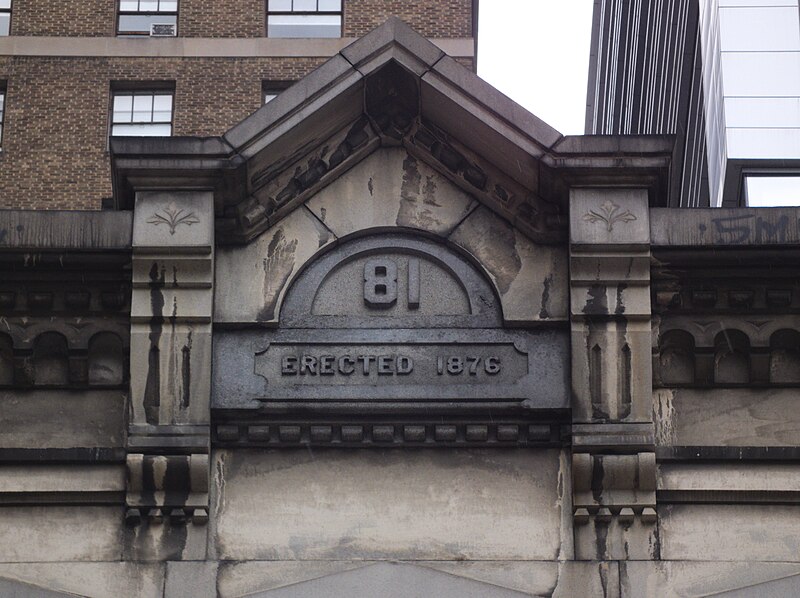



This long-lens view from Mount Washington shows us how architect William P. Hutchins crammed as much church and diocesan office space as possible into a tiny downtown lot. The church was built in 1936 in a part of town that was not the most fashionable at the time, and the location and the Depression probably account for the general modesty of the structure. But within its modest limits, it certainly makes the most of its lot.
Hutchins is not one of our most celebrated architects, but he did give the Catholics in Pittsburgh some distinguished buildings. An article about St. James Church in Wilkinsburg gives us some more information about him.
Old Pa Pitt was about to link to some of his earlier pictures of St. Mary of Mercy and discovered that he never published them. Here are a few pictures from ground level.


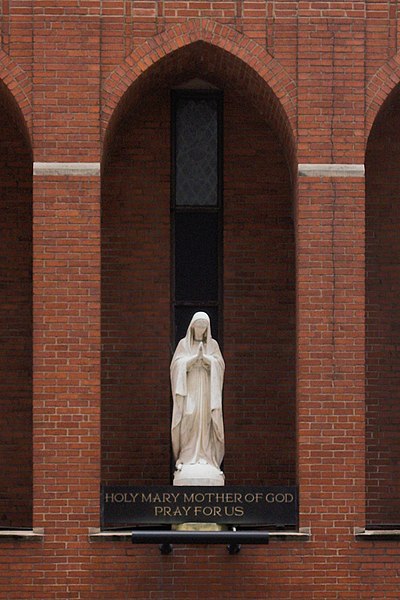


Until a few years ago, this building was the home of Weldin’s, the venerable stationer that had been selling pens, ink, and paper since well before the Civil War. Weldin’s itself is no more—the business moved to the Gulf Tower for a few years, and then vanished in the early months of the COVID pandemic. But the extraordinarily rich Italian Renaissance front of this building remains as a highlight of an extraordinarily rich row of small commercial buildings on Wood Street.
Addendum: Although the building itself is considerably older, the front is the work of architect George Schwan, who designed a new front for the building in 1913. From the Construction Record, December 13, 1913: “Architect George H. Schwan, Peoples Bank Building, has plans nearly completed for altering a three-story brick mercantile building on 415 Wood street, for J. R. Weldin & Company, 431 Wood street. Cost, $10,000.” In 1913, $10,000 would have bought an entire replacement of the front and much of the interior.

A whimsical Postmodernist design that opened in 1984; it echoes Pittsburgh landmarks without pretending to be anything other than a parking garage. Father Pitt believes the architects were Burt Hill Kosar Rittelman Associates, who also designed Liberty Center (including the Federated Tower). If anyone has better information, it will be accepted with gratitude.
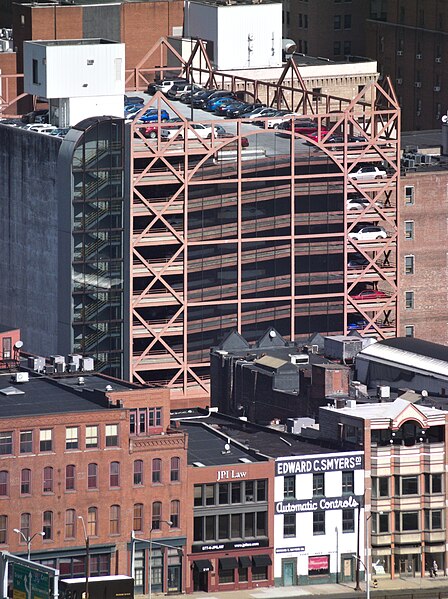

It called itself “the world’s largest variety store,” and it was probably right about that. G. C. Murphy was a big chain of five-and-dime stores based in McKeesport, but the downtown Pittsburgh store was its biggest and most exciting. It had three floors of everything, including concessions rented out to everything from produce vendors to fortune tellers. The whole establishment occupied the corner of Forbes Avenue and the Diamond and went through the block to Fifth Avenue.
The chain succumbed to corporate raiders in the 1980s, who exploited quirks of capitalist logic by driving the chain into bankruptcy and getting rich in the process. The downtown store contracted into a small part of its former empire, and then closed altogether.
For a while the buildings sat empty. Now they have been restored to beautiful condition, and the Diamond is thriving again. Old Pa Pitt wishes he could have Murphy’s back, but time like an ever-rolling stream and all that.
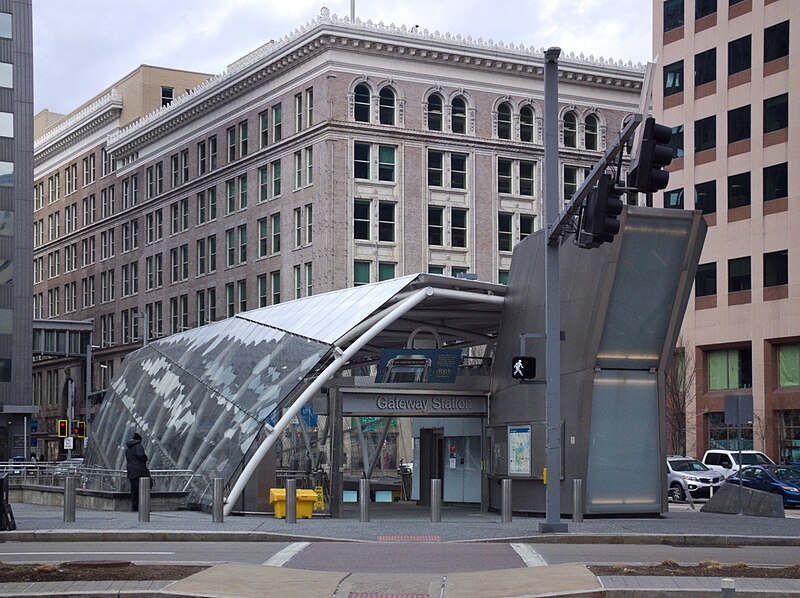
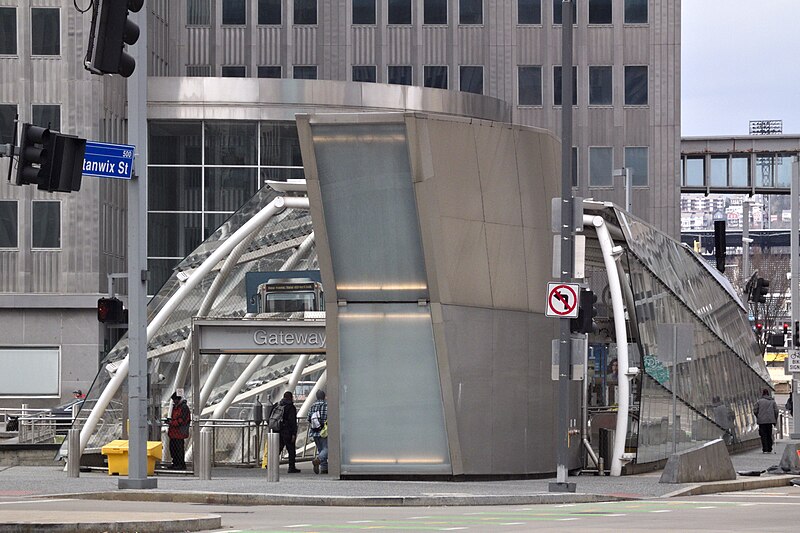
Architect Rob Pfaffman gave us just about the most whimsical subway entrance old Pa Pitt has ever seen, and he has been places and seen things. The whole station is unique, above and below the ground. There are no right angles, or at least very few. Yet from a practical point of view, nothing is confusing, and the station works very well for its intended purpose, which is to get us into a trolley quickly.


This pleasing Victorian Romanesque commercial building was probably pushing the limits of height for its era: it was built in 1884, just before the dawn of the skyscraper age. Skyscrapers had not yet posed the problem of how to treat floor after floor in the upward rise of a building; the solution, even in the most ornate Beaux-Arts skyscrapers, turned out to be to treat the middle floors as identical repetitions (compare the later Renshaw Building to the left). That has not been done here. There are eight floors, and each of them different in some way.

This meticulously restored storefront probably had workshops of some sort on the second and third floors: look how the windows are arranged to maximize the penetration of natural light as far back into the building as possible. In fact the current tenants on the second floor apparently find it too penetrating, to judge by the effort they have put into blocking it. In our age of ubiquitous electrical illumination, we forget what a problem lighting was in the old days. Gas lighting was dimmer than electric, and it produced much more heat even than incandescent lighting, which was a serious disadvantage in the summer. Thus free sunlight—or, in Pittsburgh, attenuated smog light—was zealously hoarded.

This well-preserved pile of Victorian eclecticism dates from the Centennial year, as we can see by the date stone at the top. By that time Pittsburgh had grown into a large city and was rapidly becoming an industrial behemoth, and its prosperous merchants were eager to have buildings in the most up-to-date modern style.
